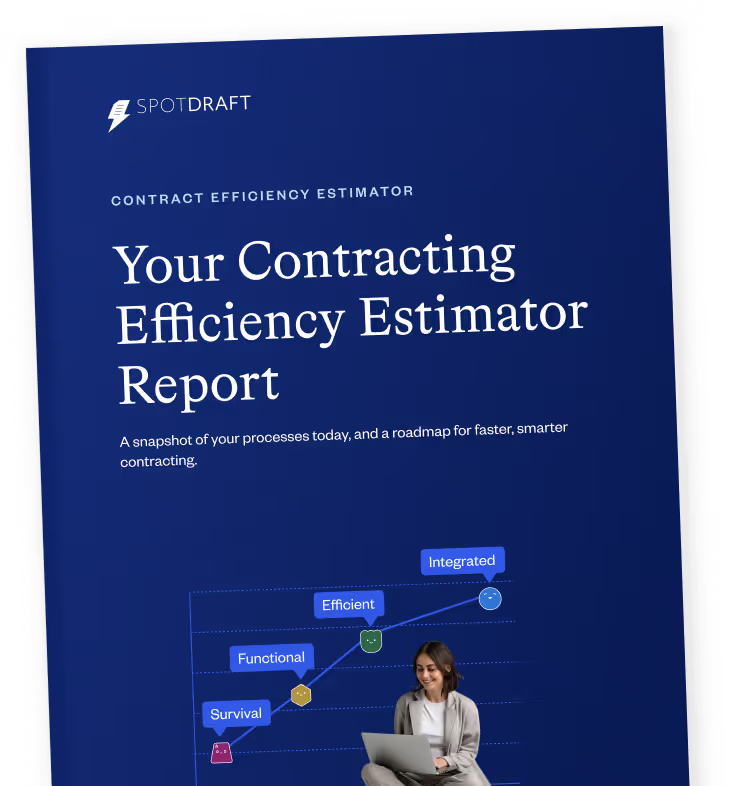During the second world war, Boeing made the B-17 “Flying Fortress” Bomber in response to the US Army Air Corp’s call for building the next long-range bomber planes. It was an advanced warplane that could carry five times the number of bombs that any other aircraft, at that time, could carry. However, when put to the test, it took off, stalled, and then crashed. After an investigation into the crash, it was discovered that the impact was due to pilot error.
Because of Flying Fortress’s comprehensive functionality, it was reasonably challenging for a pilot to keep track of all the actions required to fly the plane. Even though Boeing lost this contract, Air Corp continued to experiment with the warplane. In the end, and after inducting the warplane into service, the test pilots resorted to a standard, yet effective method to manage their tasks - create a pre-flight checklist.
Checklists have been a standard method of task management for almost everything, from flying a plane to conducting a surgery. It helps one be productive and methodical in their approach. Today we see lawyers also using checklists in their day-to-day operations, including for reviewing contracts. Contracts are central to any business, and an error in a contract can be very expensive.
A Smart Checklist To Remember Standard Clauses To Check In A Contract
In the efforts to help save cost and manage contracts effectively, we have built out a simple checklist to follow while reviewing contracts.
The checklist is divided into three subsections:
(1) Preamble
(2) Body
(3) Signature
The list of clauses, mentioned under (2) Body, is not exhaustive. Feel free to add more clauses to that section, or other items in the other sections, to create your personalised checklist to help your team review contracts better.
(1) Preamble
(a) Name of the Parties
Generally, agreements start with the following: (i) name of the agreement, (ii) date on which the agreement is being executed, (iii) names of the parties and their addresses.
To ensure that there is no ambiguity in the identity of the party to the contract, make sure to add the full names of the parties and also their registered/corporate addresses. While it is common to see incorporation numbers or representative names, along with the party names, mentioning these details is not compulsory.
(b) Scope of the Agreement
Use the preamble to clarify the intention of entering into the agreement, the scope of the agreement, and what you and your counterparty hope to accomplish by entering into this agreement.
(2) Body
(a) Exclusive rights provision
An exclusive rights provision restricts a party’s ability to render the same services or enter into a similar agreement with a different party. These provisions can limit your ability to diversify your customer/vendor base. Further, exclusive arrangements in your legal documents can make your organisation be viewed less favourably by potential investors or other partners.
At the time of entering into an agreement, it is crucial to ensure that any exclusive arrangements are well thought out and limited in scope. For example, consider placing geographical or performance restrictions and also require the counterparty to meet performance requirements to maintain the exclusive arrangement.
(b) Indemnity obligations
In an agreement, these obligations dictate who will be responsible for damages for any loss caused to the other party. In most situations, people accept an indemnity obligation without realising the open-ended financial exposure that they are creating.
Not agreeing to an indemnity obligation may not be an option. Instead, you should consider making the obligation apply to both parties. Moreover mandating the procurement of insurance ensures financial exposures are covered. Lastly, carefully consider the grounds under which you will be liable to indemnify and negotiate carve-outs or caps for the financial exposures.
(c) Automatic renewal
Automatic renewals tend to lock a party into the same terms for a more extended period of time than one would be comfortable. By affecting provisions like pricing and duration, automatic renewals play a twin role, which may be both good and bad.
At the time of negotiating the agreement, carefully consider the provisions which will be affected by an automatic renewal. Make sure to have fall-back provisions that allow you to stop the automatic renewal by providing prior notice. Also, have reminders in place to ensure that you do not forget to give these notices if necessary.
(d) Confidentiality obligations
A confidentiality obligation not just protects the terms of the engagement but also any underlying information that is shared. Mention the scope and duration for which the confidentiality obligations should apply, and also include the class/category of persons on whom the duties should apply.
Lastly, do not forget to provision for what happens when the confidentiality obligations cease to exist. In such a circumstance, the provision also details how the information will be shared, the standard of care that needs to be undertaken, and, how the data needs to be returned.
(e) Termination for convenience
A termination for convenience provision allows you to terminate the agreement at any time, by providing a prior notice of termination to the other party. While this provision ensures that you have the ability to move away from an engagement at any time, allowing the other party the right to terminate for convenience could mean that the arrangement could be terminated without you being able to do anything about it.
To protect your interests adequately, make sure to either draft this provision such that it does not let the counterparty to terminate for convenience, or implement certain conditions under which such a provision can be exercised like after the completion of a stipulated amount of time, or after the fulfilment of specific predefined requirements.
(f) Assignment-consent requirements
Generally, agreements restrict a party’s ability to assign their rights to a third party without the consent of the counterparty. This restriction could potentially limit your freedom to manage your businesses as you would want to, so consider this provision in your agreements carefully.
A provision dictating a party’s right to assign only with the other party’s prior permission is relatively standard. However, do specify carve-outs to the consent requirements, for example, when the assignment is for a complete corporate restructuring. It would also help to clarify the assignee and assignor’s liability in such situations.
(g) Non-compete, no-hires and non-solicitation
Most agreements will restrict you from hiring the counterparty’s employees or engaging with the counterparty’s clients. While these are standard provisions to include in legal documents, one can always provision to make sure that they don’t become unreasonably restrictive.
For such provisions, consider including carve-out conditions like hiring the counterparty’s employees if they responded to a newspaper advertisement or any other ‘call for application’ post that you put out.
(h) Dispute resolution
Lastly, establishing an effective dispute resolution process will ensure that any post-execution dispute that arises from the agreement is efficiently managed. It is common practice to include an arbitration or mediation process in the dispute resolution provision, consider including something similar.
Also, when defining the governing law and jurisdiction, under this provision, carefully consider the manner in which you would want the agreement to be interpreted and even the logistical issues with fighting a dispute at the jurisdiction that you mention in the agreement.
(3) Signature
(a) Signature Authority
Before closing the review of the agreement, make sure that the people identified to execute the agreement have the necessary authorities from their organisations to implement the terms of the deal.
Generally, the board of directors of a company passes a general resolution authorising that person to sign the contract. For your records only, you could ask your counterparty to furnish that board resolution which allows the signatory authority to execute agreements of this nature.
(b) Other details
Lastly, make sure that you have not overlooked the minor points like mentioning the names of the parties of the agreement, in case it is an organization mention the complete name. Signatories should also be required to add, under their signature, their name, their title and the date on which they execute the agreement.
Final note: a checklist's effectiveness is dependent on its thoroughness. Just like it would be dangerous to not have an exhaustive pre-flight checklist, your pre-signing checklist should also include exhaustive clauses or conditions that are specific to your business.
Also Read: Learn about the 5 most negotiated clauses in contracts here.
Also read: A Quick Introduction to eSignatures


.avif)







